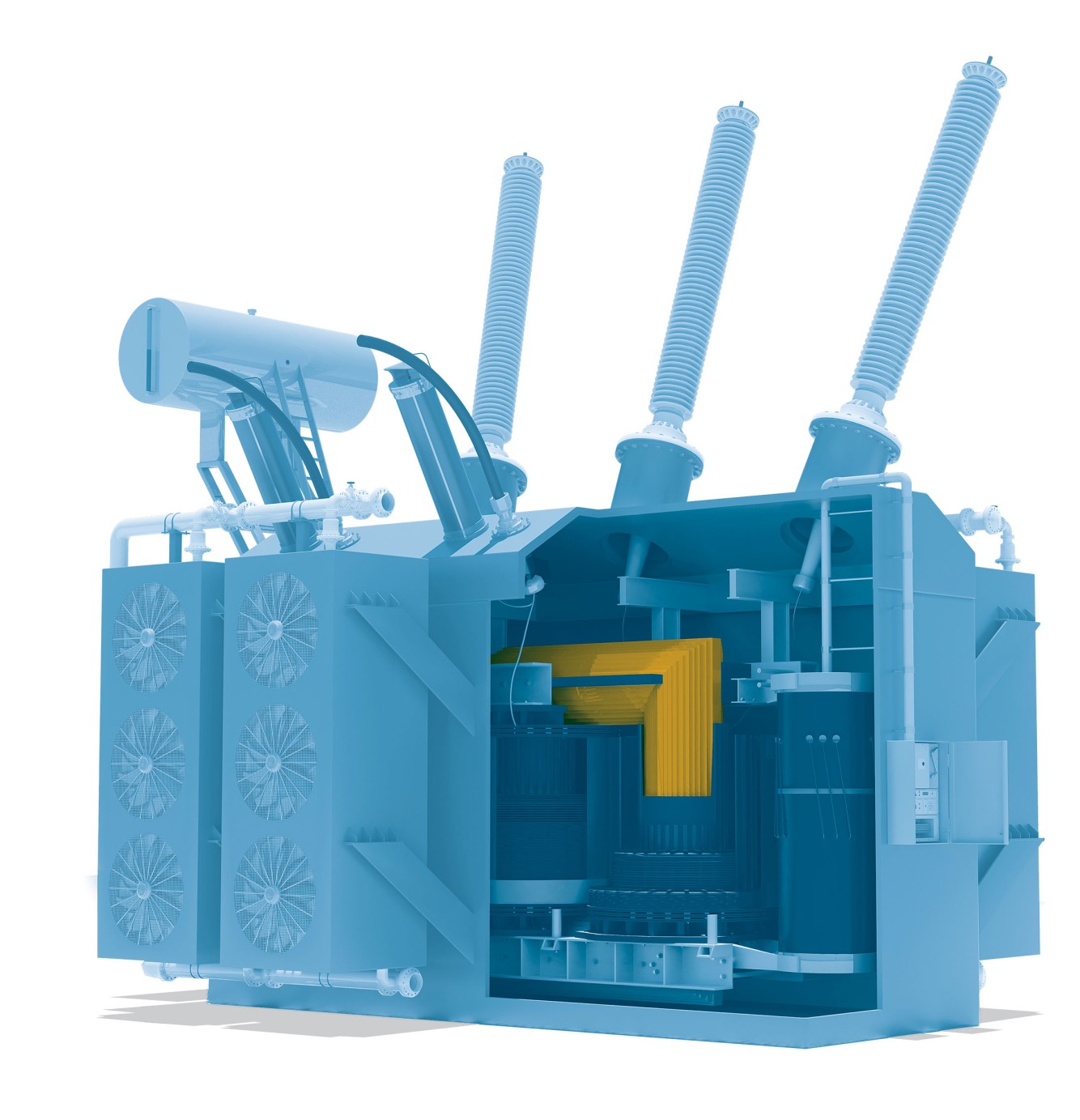Transformers are what makes electrical power available everywhere. Their cores contain electrical steel.
For getting more information please click on the buttons inline the picture.

Route of the electricity
1. Depending on their size, power plants generate from 690 volts to several kilovolts (kV). The power cannot be transported at these voltages, because too much energy would be lost in the wires due to the material resistance.
2. Different transformer substations in high- and ultrahigh-voltage networks increase the voltage up to 400kV. This reduces the current hence the resistence in the wires, making low-loss transportation of electricity possible.
3. Medium-voltage networks distribute power regionally from high-voltage networks and supply key customers such as hospitals, factories and railways.
Power transformer
1. A power transformer is as tall as a single-family house and weighs as much as 200 mid-sized cars.
2. Transformer houses in residential areas reduce the voltage to a low 230 volts to or 400 volts. This is safer for end users and requires only minimal insulation.
The fundamental principle: induction
When alternating current is applied to a wire coil, the resulting magnetic field induces alternating current in a second coil. The voltage relation between the two circuits is definde in terms of the relationship between the wire windings. The frequency remains the same.
Much more efficient with electrical steel
In order to minimize losses, transformer cores are made of ultrathin layers of coated sheet metal that are insulated from each other. In addition, the metal crystallites (grains) are oriented in a magnetically favorable direction to reduce hysteresis loss. This material is known as grain-oriented electrical steel.
Variants for every application
The voltage is adjusted by changing the number of wire windings in the coils.
The voltage on the secondary coil increases when the number of windings is higher than on the primary coil. This enables energy from wind turbines to be fed into the grid.
In order to lower the voltage, the number of windings in the secondary coil has to be reduced. This is done in changers and halogen lamps, for example.
Properties of grain-oriented electrical steel
Transformer core sre made of soft magnetic materials such as iron-silicon alloys that are easy to magnetize.
The grade of the material used in the transformer has a major influence on performance and efficiency during power conversion.
The thinner the transformer plates, the lower the number off eddy currents that occur. This reduces power loss.
Grain-oriented: A crystallographic texture and a high-performance coating reduces hysteresis losses and noise.
Further information



